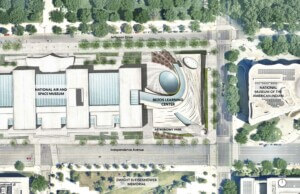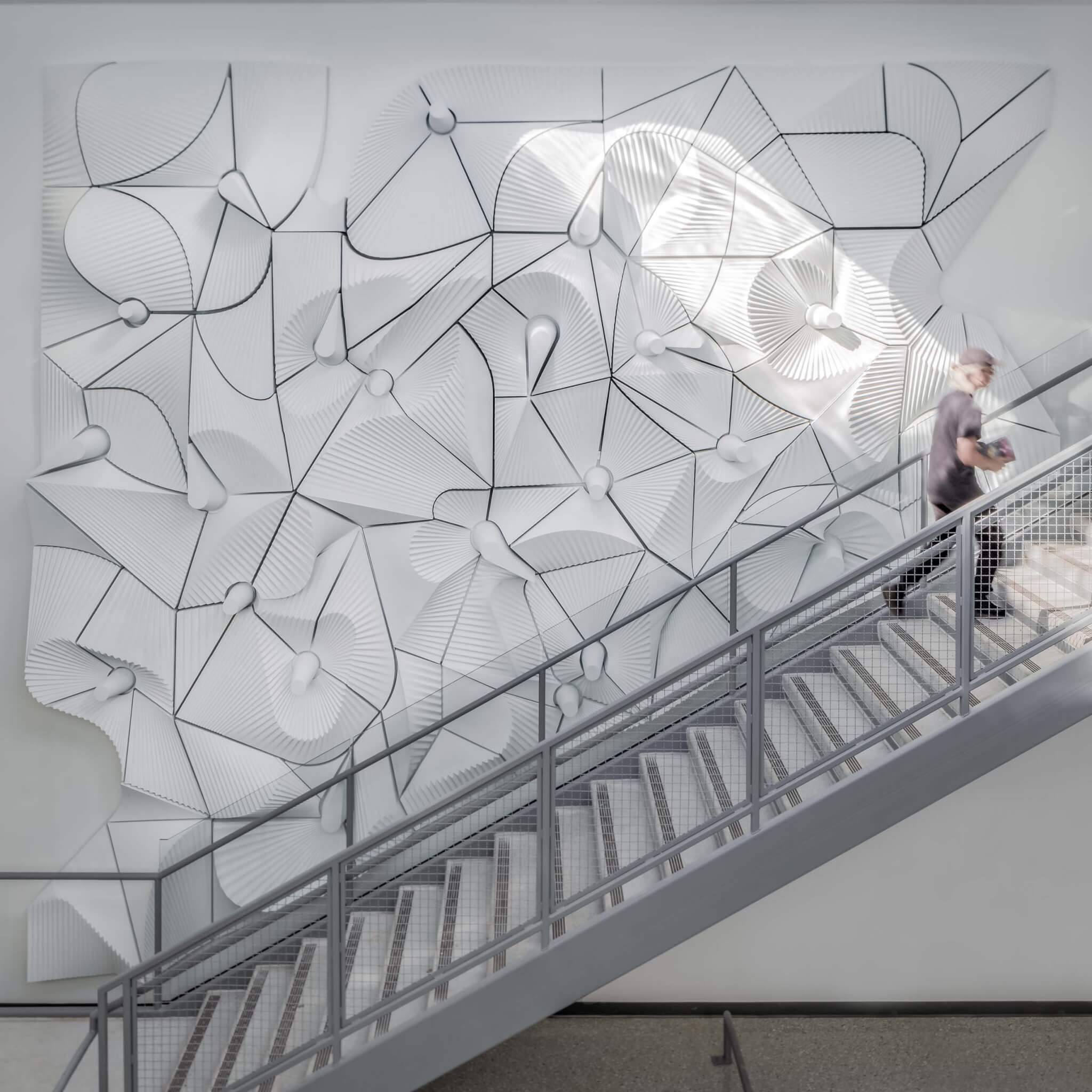Sounding resonantly across the dimly lit atrium that houses the Queens Museum’s 1964 Panorama of the City of New York, the voice of Guadalupe Maravilla (born Irvin Morazán in San Salvador) shifted seamlessly between Spanish and English as he recounted a formative childhood experience: In 1984, he migrated from El Salvador to Texas to escape the violence of the Salvadorian Civil War. At ten years old, Maravilla had traveled without an adult save for the coyote who had been hired to escort them across the border. The performance was a crowning moment for an equally powerful exhibition, Mundos Alternos: Art and Science Fiction in the Americas, on view through August 18.
Clad in a billowing polyester costume that cartoonishly mimicked a person being carried by a lime-green alien, Maravilla recited the monologue while accompanied by three other players, two of them dressed metallic silver bodysuits and faux taxidermied bear heads, and the third in a white balaclava and a cape adorned with sculpted rabbit heads. Such regalia is typical of Maravilla’s performances, which combine Mayan cosmologies with the artist’s personal history. For this performance—intended to “cleanse political phobias and blockages of New Yorkers”—the actors alternately sat, moved about, and chanted among the panorama’s rivers and bay, thereby enacting the title of the piece, Walk on Water.
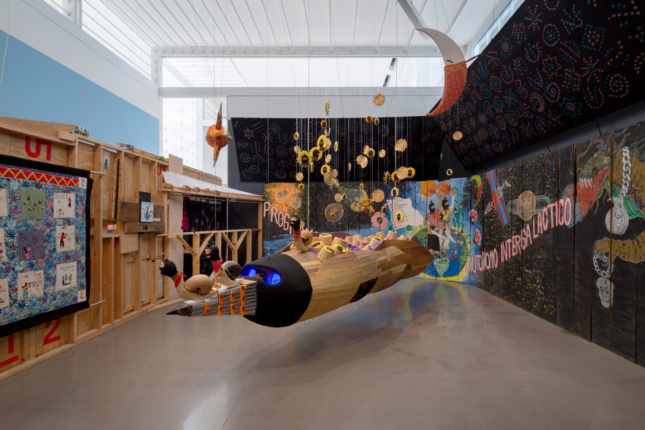
Bringing together over thirty Latin American and Latinx artists, Mundos Alternos focuses on works that engage the many allegorical lenses afforded by science fiction to examine the multitude of possibilities for the ongoing struggle of Latinx immigrant populations. The works on view encompass a sprawling array of mediums—from video, to sculpture, to installation—and take on an equally wide range of approaches to addressing the shared, thematic subjects of colonization, alienation, and diaspora.
Curators Robb Hernández, Joanna Szupinska-Myers, and Tyler Stallings originally organized the exhibition for UCR ARTS at the University of California, Riverside, as part of the larger Pacific Standard Time: LA/LA presentation that opened in September 2017 and ran through January 2018. According to the Queens Museum’s website, they hope to extend the run of Mundos Alternos either within or outside of the U.S. in order to continue a “conversation about speculative aesthetics at a time when immigrant futures are facing a crossroads.”
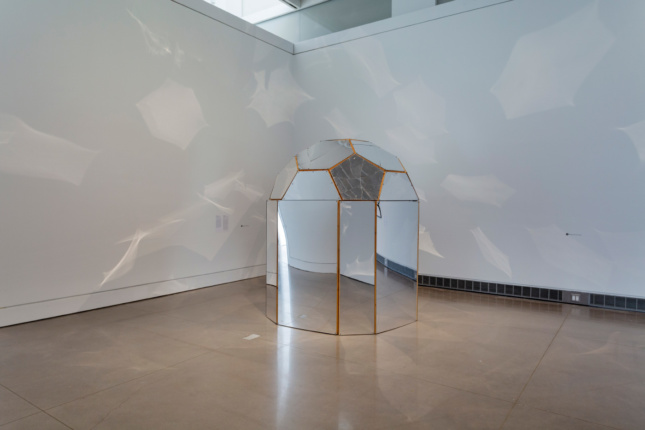
Among the many highlights of the presentation are a reading room where visitors can peruse classic and contemporary works of science fiction published in English and Spanish. Inside a small theater, Alex Rivera’s film Sleep Dealer (2008) is screened on a loop, which astutely revises the heroic protagonist tropes of Blade Runner and The Matrix to apply to the plight of migrant workers. Indeed, the exhibition is aptly divided into an array of physically and conceptually linked realms—or “constellations,” as the curators refer to them—where viewers are free to enter, peer into, or ignore a diverse array of interior spaces.
The museum’s central, sky-lit foyer is dedicated to a kinetic sculpture by Chico MacMurtrie and Amorphic Robot Works (ARW) titled Organic Arches (Time Traveler) (2014/2017). Here, sixteen tendrils constructed from electric valves sheathed in diaphanous white fabric hang just above the floor. When “closed,” each cylinder is coiled into loops and the structure constitutes a static, impenetrable scaffold until it is activated at predetermined times, when a computer system slowly expands the contracted limbs of each tube. Extending into the archway of its title, the “opened” sculpture briefly allows visitors to pass through its ribcage-like tunnel before curling back into stasis.
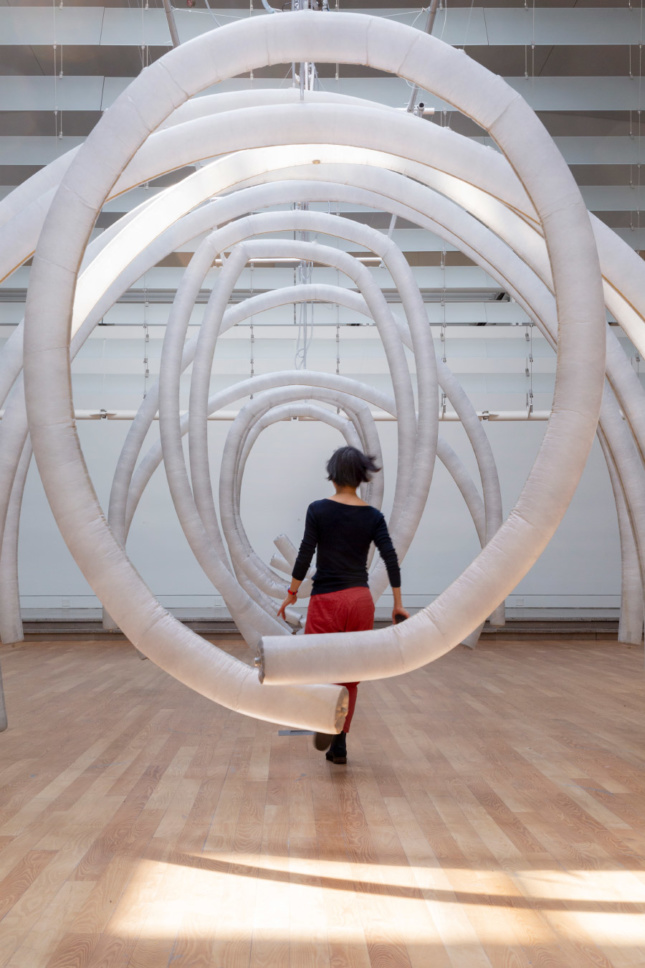
By far the most immersive work in the exhibition is Rigo 23’s multi-room installation, where manifestos of the Zapatista Army of National Liberation are scrawled among emblems of the movement, which take the form of snails, butterflies, balaclava-clad activists, and ears of corn. Queremos un mundo donde quepan muchos mundos, states one of the paintings hung in the final vitrine of the installation: “We want a world in which many worlds fit.”
Maravilla’s July 21st Walk on Water performance came at an especially pertinent moment in the realm of New York cultural institutions; four days earlier, an Artforum Slant garnered widespread attention for calling on artists participating in the 2019 Whitney Biennial to withdraw their contributions to the exhibition as a form of protest against the museum’s refusal to remove billionaire Warren B. Kanders from their board of trustees.

Kanders is the owner of Safariland Group, a distributor of law enforcement equipment including the brand of tear gas that has been used on Central American refugees attempting to cross the U.S.–Mexico border. By the time Maravilla entered the panorama in his human-alien costume, eight artists had demanded the removal of their work from the biennial, and tens of others had publicly advocated for Mr. Kanders’s resignation.
While Kanders eventually resigned from his position and the eight protesting artists will remain in the biennial, the renewed discussion regarding the stewardship of public art collections by progenitors of state violence has galvanized many facets of an art world known for its implicit insularity. With its terminus yet to be determined, Mundos Alternos thus constitutes a prescient landscape of possible dystopias that remain unrealized yet highly possible, should the populations in positions of power succumb to the forces of greed or inertia.
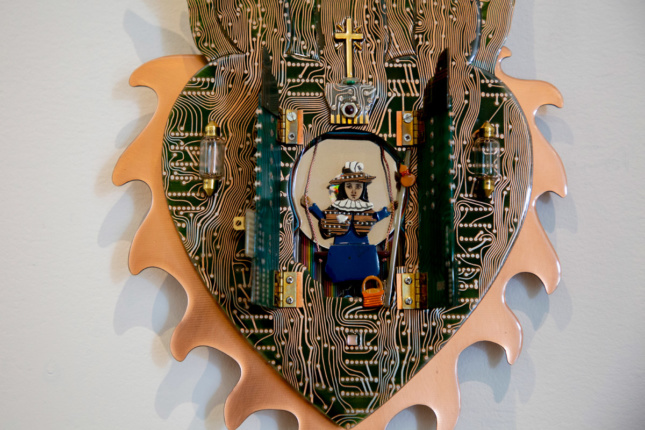
The spectators lining the panorama for Maravilla’s soliloquy were faced with the traumas inflicted by such dystopic scenarios. Maravilla’s performance, the calm narration of his own transience and pain, reminds us that the retention of our humanity is a choice we must actively pursue, and that the struggle for survival increasingly required of globally marginalized demographics will be fought not only at far off borders but within the private and public spaces of our own cities.









